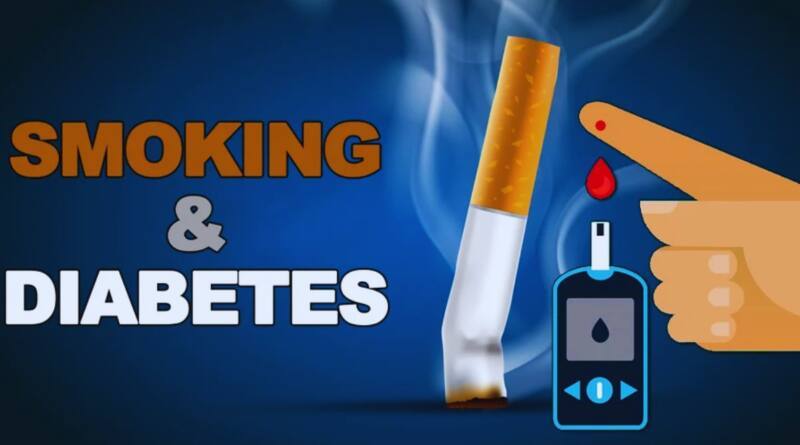The Truth You Can See: Does Smoking Cause Diabetes?
While we examine the relationship between what we eat and diabetes, we often overlook a habit that is a greater health risk for people with diabetes: smoking. Smokers have a threefold higher risk of developing diabetes than nonsmokers.
Many studies have found that smoking increases the risk of developing type 2 diabetes by 30–40%. Those with prediabetes are more likely to progress to full-blown diabetes, whereas those with diabetes tend to have higher HbA1c (average over three months) levels. Nonsmokers have much better control over HbA1c levels.
The problem is that diabetes and tobacco use are rapidly increasing in India. The International Diabetes Federation (IDF) in 2003 and the American Diabetes Association (ADA) in 2004 strongly advised people with diabetes not to smoke due to the increased risk of complications.
Cigarettes contain over 4,000 chemicals, of which 51 are known to cause cancer. These cause inflammation and oxidative stress in several organs. They induce insulin resistance in the liver, muscles, and adipose tissue. They also have an effect on pancreatic function and increase the risk of chronic pancreatitis, which causes secondary diabetes. Insulin may help blood sugar enter cells, but nicotine alters cells so that they do not respond to insulin, resulting in elevated blood sugar levels. What about diabetics who smoke and consume alcohol? Alcohol increases the risk of chronic pancreatitis. Smoking doubles the likelihood of developing secondary diabetes. Smoking increases the risk of diabetes complications. The link between smoking and heart attacks or strokes is already well established. If you have Type 2 diabetes and smoke, your chances of having a heart attack or stroke increase by a factor of three or four times. Smoking increases the risk of blood clots in the arteries, which can lead to heart attacks. It reduces the flow of oxygen to the heart and damages its muscles.
Nicotine is a vasoconstrictor, which means it narrows the arteries, resulting in ischemia. When this occurs in the peripheral blood vessels that supply blood to the legs and feet, it increases the risk of developing peripheral vascular disease and gangrene.
If not treated properly, smoking can hasten long-term complications such as heart disease, kidney disease (nephropathy), nerve disease (neuropathy), eye disease (retinopathy), and foot disease.
In extreme conditions, smokers have a higher risk of amputation than nonsmokers. Research has shown that smoking causes pancreatic cancer as well as other types of cancer.
That’s why I tell my patients to quit smoking for good. Many people ask me if there is a safe limit. The truth is that there isn’t. Even one cigarette per day causes harm. Aside from smoking, they exhibit less discipline in diet and lifestyle management.
Disclaimer: The WFY website aims to share experiences, opinions, and information on various topics. However, it is important to note that the author of this blog does not possess any professional authority or expertise, especially in subjects related to health, medical advice, or legal matters.
The information provided on this website is based on personal experiences, research, and general knowledge. While we strive to provide accurate and up-to-date information, we cannot guarantee the completeness, reliability, or accuracy of the content. Therefore, any action you take based on the information found on this blog is at your own risk.
The contents of this blog should not be considered a substitute for professional advice or consultation from experts in the respective fields. If you require specific advice or assistance, we strongly recommend consulting with a qualified professional.
The WFY (website) and its author will not be liable for any errors, omissions, or any losses, injuries, or damages arising from the use or reliance on the information presented on this blog. It is your responsibility to verify any information obtained from this blog and to use it at your own discretion.
Please note that the opinions expressed in the articles and comments on this blog are those of the respective authors and do not necessarily reflect the views of the website owner or any associated individuals.
By using this website, you acknowledge and agree to the above disclaimer. If you do not agree with this disclaimer, please refrain from using this website.




